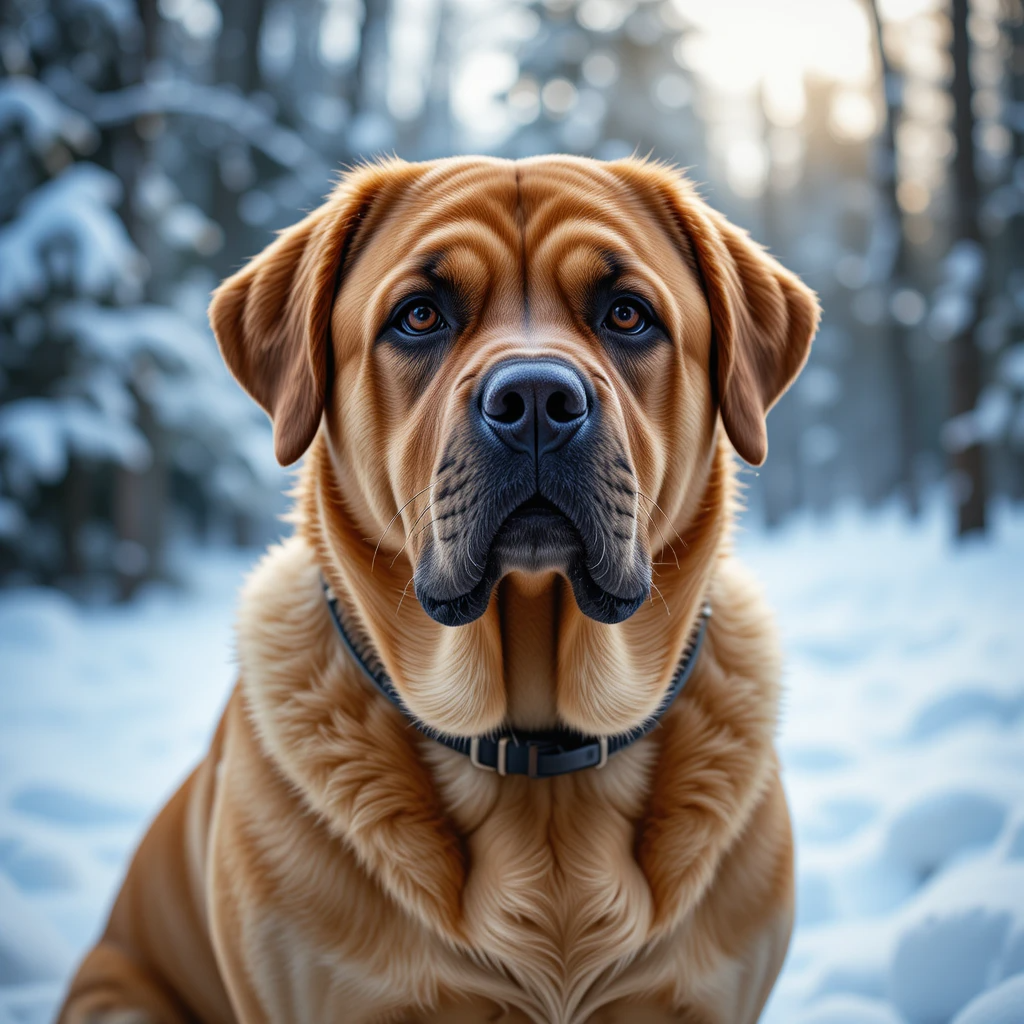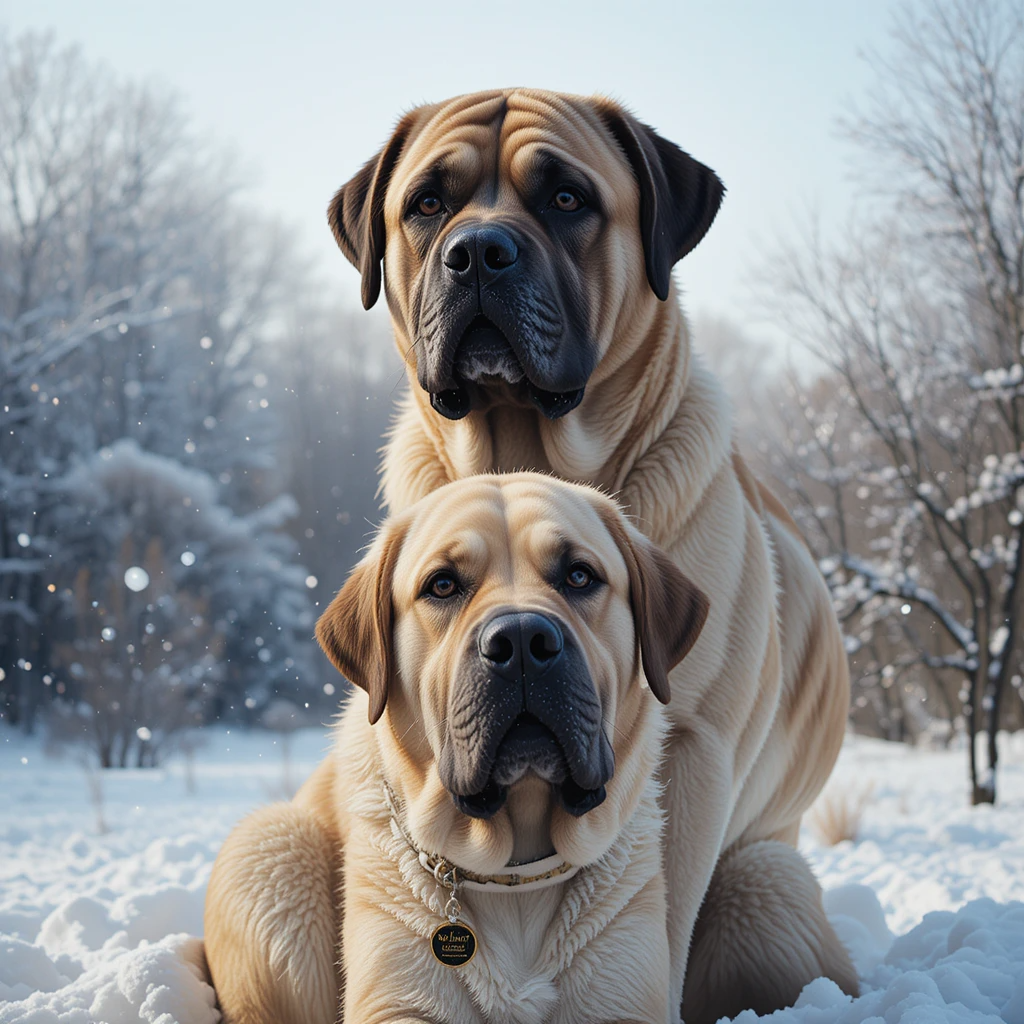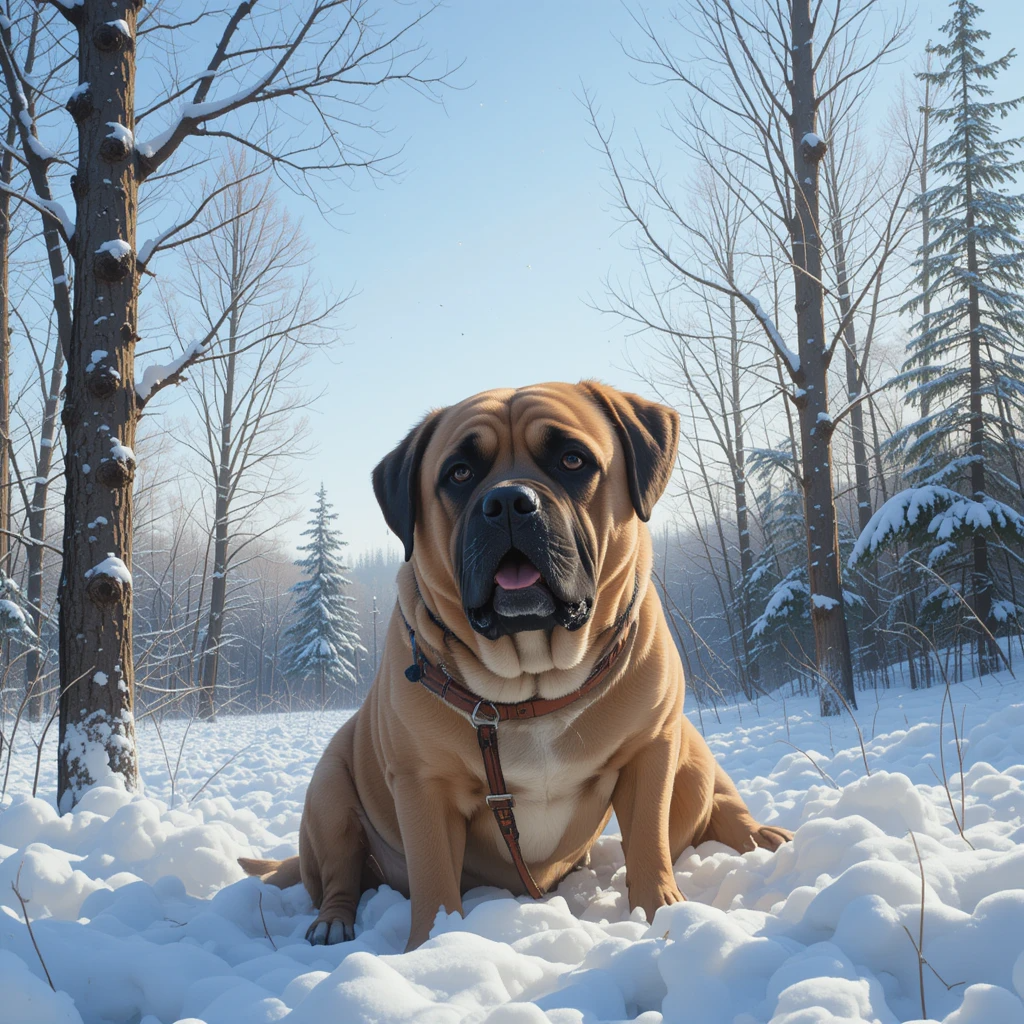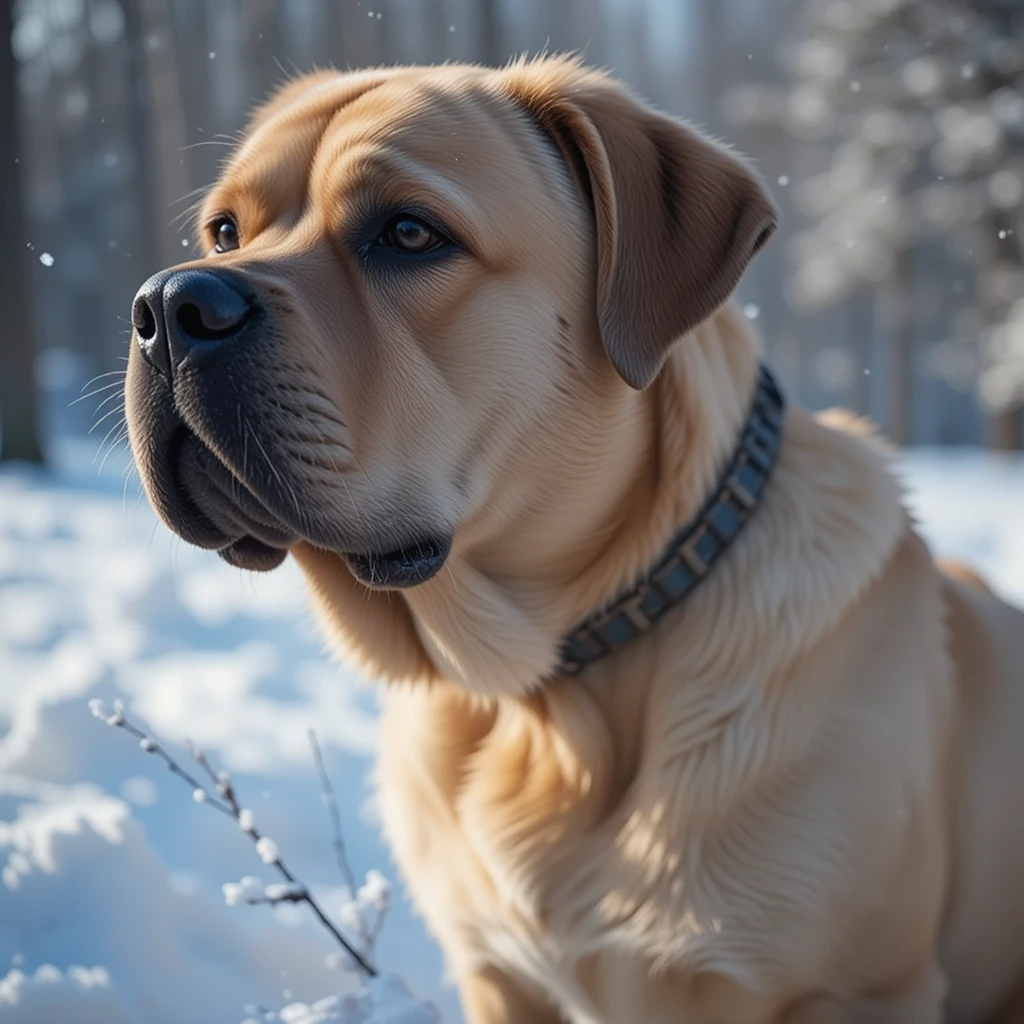As the days get shorter and the Winters with Bullmastiffs temperature begins to dip, it’s time to think about how to prepare your Bullmastiff for the cold winter months. Known for their impressive size and protective nature, Bullmastiffs are an incredible breed that can handle a range of climates, but they still require extra attention during the colder seasons to ensure their well-being. If you’re wondering how to keep your Bullmastiff warm, comfortable, and safe this winter, this guide will walk you through everything you need to know.
Table of Contents
1. Adjusting Their Diet for Winter
The winter months can change your Bullmastiff’s dietary needs. With colder temperatures, your dog’s metabolism may speed up to keep warm, which means they may require more calories. While they naturally have a thick coat, the additional energy expenditure can make them hungrier. To help keep them in top shape, consider adjusting their diet by adding a bit more protein and healthy fats. But remember, Bullmastiffs can be prone to obesity, so you’ll need to keep a close eye on their weight, especially since they’re a large breed.
Look for high-quality dog food that’s formulated for colder weather or large breed dogs. You can also talk to your vet about supplementing their diet with fish oils or other joint health nutrients to keep them feeling strong and healthy through the winter.

2. Create a Warm, Cozy Environment
Winter brings cold drafts and chilly floors, which aren’t ideal for your Bullmastiff’s comfort. To help your dog stay cozy, you need to ensure that they have a warm place to sleep. Bullmastiffs, with their massive size, can be prone to joint stiffness, which may worsen in the cold. Investing in an orthopedic bed is one way to make sure their joints and muscles stay supported during the night.
Make sure the area where your Bullmastiff sleeps is away from cold drafts and has enough soft bedding to keep them warm. If they sleep outside, you’ll need to provide a well-insulated doghouse with thick blankets or heated pads, particularly if you live in areas where temperatures regularly dip below freezing.
3. Limit Time Outdoors
Although Bullmastiffs are hearty dogs, they can still feel the chill of winter, especially if you live in areas with harsh snow and wind. While they have a thick coat, it’s essential to avoid prolonged exposure to extreme cold, which can lead to frostbite or hypothermia. Bullmastiffs love to please their owners and may be tempted to stay outside longer than is safe for them.
Limit outdoor play to shorter bursts and always ensure that they have a dry, warm area to retreat to if they’re spending time outside. Also, try to keep your walks during the day when the temperature is higher, and avoid walking them early in the morning or late at night when temperatures are at their coldest.
4. Keep Their Coat Clean and Dry
A Bullmastiff’s coat is dense, which helps keep them warm, but it can also trap moisture if they get caught in rain, snow, or ice. Moisture trapped against their skin can lead to discomfort, skin irritation, or even fungal infections. It’s important to dry them off promptly if they get wet and to make sure their coat is clean and dry before they settle down for a nap.
Regular brushing will help to keep their coat free of mats and tangles, which can also trap moisture. Plus, brushing helps with circulation and removes dead hair, keeping their skin healthier throughout the winter.
5. Invest in Winter Gear
Bullmastiffs are not always known for their love of wearing clothes, but in extreme winter weather, a well-fitting dog coat or sweater can make a big difference in keeping them warm during walks. Even though they have a thick coat, some Bullmastiffs might still feel the cold more than others. A sweater or coat helps to keep their body temperature regulated, especially if you’re heading out for walks during particularly cold or snowy days.
You’ll also want to think about protecting their paws. Snow and ice can cause discomfort, and salt or de-icing chemicals can irritate their sensitive pads. Dog booties are a great investment for preventing this, and they can help keep your Bullmastiff comfortable while walking in winter conditions.
6. Protect Their Paws from Winter Hazards
When snow and ice accumulate, they can create hazardous walking conditions, especially for a large breed like the Bullmastiff. With their massive weight, they might have difficulty staying balanced on slippery sidewalks or roads. To prevent slips and falls, be sure to keep their walks on manageable terrain and avoid walking them in areas where ice has built up.
Salt and ice melt chemicals can also cause irritation to your Bullmastiff’s paws, so be sure to wash their paws thoroughly after each outdoor excursion. You can also use paw balms or wax to protect their pads from becoming cracked or irritated. In addition, keeping their nails trimmed will reduce the risk of them getting caught in the ice or snow.

7. Hydration is Important
Winter can be deceivingly dry, and your Bullmastiff’s hydration needs are just as important in the colder months as they are in the summer. Make sure fresh water is always available to your dog, both indoors and outdoors. If you leave water outside, be sure to check that it hasn’t frozen over. Cold temperatures can also cause your Bullmastiff to drink less water, so you may want to make their drinking water warmer to encourage hydration.
8. Indoor Exercise and Mental Stimulation
Bullmastiffs need plenty of exercise to stay healthy, but harsh weather conditions can make it difficult to get outside for long walks. To keep your dog active, consider adjusting their routine to include more indoor play. You can play fetch, tug-of-war, or other games inside to keep them physically and mentally stimulated. Winter is also the perfect time to work on training, as indoor spaces provide the opportunity to teach them new commands or practice obedience.
9. Regular Vet Check-Ups
Cold weather can exacerbate pre-existing health issues in Bullmastiffs, particularly joint problems like hip dysplasia or arthritis. Be sure to schedule regular vet check-ups during the winter months to ensure your dog is healthy. If your Bullmastiff is already dealing with arthritis or other joint issues, your vet may recommend supplements or pain management solutions to make their winter months more comfortable.
10. Winter Hazards to Watch For
During the winter, be on the lookout for potential hazards that could harm your Bullmastiff. Snow can obscure dangerous objects or even wildlife that your dog might try to interact with. Always keep them on a leash when outdoors to prevent them from running off into dangerous areas. Also, be cautious of outdoor decorations like Christmas lights or candles that could be a safety risk.

Conclusion:
Winter doesn’t have to be a time of discomfort for your Bullmastiff. With the right preparations, you can keep them safe, warm, and active during the colder months. From adjusting their diet to protecting their paws and coat, every small change will make a big difference in their winter experience. Your Bullmastiff loves you unconditionally, so it’s only fair that we do everything we can to keep them happy, healthy, and cozy as the season changes. With a little extra care, your Bullmastiff can enjoy the winter just as much as you do—by your side, sharing the warmth and joy of the season.

